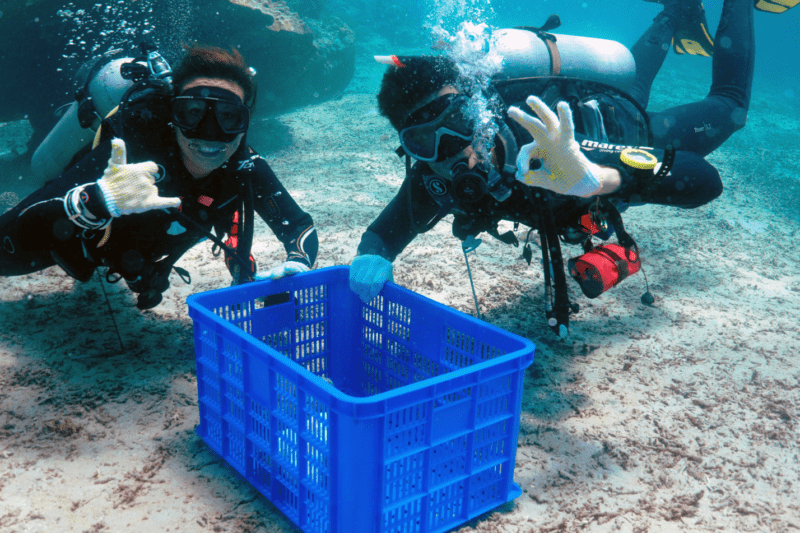Ever wondered how you can contribute to ocean reef conservation and protect marine ecosystems? The “Conservation Guide to Building an Ocean Reef” provides essential insights. Coral reefs, though covering only a small area, are home to over 25% of all marine species. With increasing environmental threats, coral reef restoration has become more critical than ever.
This guide details the steps to initiate and execute an effective ocean reef restoration project. It emphasizes careful planning, collaboration with local communities, and climate change adaptation. Whether you’re an experienced conservationist or a beginner, this guide equips you with the necessary tools to develop a strong Restoration Action Plan.

What This Guide Covers
- A six-step planning framework for coral reef restoration
- Collaboration with local stakeholders and climate adaptation strategies
- Tools and templates for developing a Restoration Action Plan
- Strategies to enhance marine biodiversity and reef resilience
- A structured approach to mitigating reef degradation
- Engagement opportunities for both conservationists and volunteers
Key Considerations Before Starting a Conservation Project
What Are the Main Threats to Coral Reefs?
Coral reefs face multiple threats, including climate change, ocean acidification, and pollution. These factors lead to coral bleaching and habitat destruction, making strategic conservation efforts essential. Understanding these threats enables the development of effective preservation initiatives.
Is the Tourism Industry Supporting Reef Conservation?
Tourism plays a dual role in reef conservation. While unsustainable practices can harm coral reefs, eco-tourism initiatives help protect them. Responsible tourism educates visitors on reef-friendly practices, ensuring long-term sustainability.
How Does Restoration Complement Existing Conservation Efforts?
Restoration supports ongoing conservation by repairing damaged reefs. It complements traditional protective measures, ensuring long-term resilience. Effective conservation plans must be adaptable and involve local communities to strengthen marine biodiversity.
Steps to Launch a Marine Conservation Project
1. Define Goals and Geographic Focus
Begin with a clear conservation objective—whether protecting a specific species, restoring habitats, or increasing public awareness. Establishing goals provides direction for the project.
2. Identify and Prioritize Sites
Select locations that will benefit the most from conservation efforts. Consider biodiversity, existing threats, and ecological importance when choosing sites.
3. Design and Implement Effective Methods
Tailor conservation methods to site-specific challenges. Techniques such as coral transplantation, fishing regulations, and eco-tourism partnerships can enhance reef restoration.
4. Develop a Restoration Action Plan
Create a detailed plan outlining necessary activities, timelines, and responsibilities. A structured approach improves execution efficiency and increases project success rates.
5. Implement Restoration Activities
Execute planned restoration actions, ensuring they align with conservation goals. Engage local stakeholders to promote sustainability.
6. Monitor and Evaluate Progress
Continuous monitoring and evaluation are essential for long-term success. Adjust strategies based on results and involve communities to strengthen conservation efforts.
Advancing Marine Conservation
1.Build Capacity for Conservationists
Training conservationists and equipping them with essential tools improves long-term conservation efforts. Skill development enhances the effectiveness of marine protection initiatives.
2.Share Best Practices
Learning from successful conservation programs enables better implementation. Documenting and sharing best practices facilitates knowledge transfer across conservation projects.
3.Recognize and Support Successful Programs
Acknowledging effective conservation projects fosters motivation and attracts further engagement. Highlighting achievements encourages participation in marine protection efforts.
4.Create Peer-to-Peer Networks
Networking among conservationists promotes knowledge exchange and collaboration. Peer-supported conservation efforts yield more significant, lasting impacts.
5.Conduct Economic Analysis
Understanding conservation-related economic trends aids in strategic planning. Financial analysis supports the sustainability of marine protection projects.
6.Secure Funding
Financial resources are essential for implementing conservation strategies. Securing grants and funding ensures continuous project execution and success.
7.Engage Governments
Government involvement strengthens conservation efforts through policy support and resource allocation. Policies that integrate local and indigenous knowledge create sustainable conservation models.
8.Learning from Marine Conservation Dive Centers
Dive centers play a crucial role in ocean conservation. In Nusa Penida, Legend Diving promotes eco-friendly diving practices and marine conservation initiatives. These centers educate divers on sustainable techniques, collect scientific data, and contribute to global marine research.
9.Role of Green Fins and PADI Eco Centers
Organizations like Green Fins and PADI Eco Centers follow conservation-oriented diving standards. Programs such as “Adopt the Blue” help create an extensive network of protected underwater sites.
Best Marine Conservation Volunteer Programs
1.Volunteering in Nusa Penida, Bali
Nusa Penida offers volunteering opportunities focused on coral restoration, sea turtle conservation, and coastal cleanups. Participants gain hands-on experience while exploring the region’s rich marine biodiversity.
For diving enthusiasts, the Nusa Penida Open Water PADI course integrates professional certification with conservation training, providing an immersive learning experience.
2.Volunteering in Belize
Belize is home to the world’s second-largest barrier reef. Conservation programs here focus on removing invasive species, marine biodiversity surveys, and coral restoration. Volunteers gain firsthand exposure to marine ecosystems while contributing to sustainable conservation efforts.
3.Volunteering in Australia’s Great Barrier Reef
The Great Barrier Reef offers conservation programs that involve coral propagation, marine debris clean-ups, and reef health monitoring. Volunteers work alongside marine biologists to protect this global natural wonder.
The Urgency of Ocean Reef Conservation
Coral reefs contribute over $10 trillion to the global economy and generate $3 billion annually for the U.S. economy. However, coral reef degradation has already resulted in a 30-50% loss of reef coverage worldwide. If immediate action isn’t taken, coral reefs could disappear by the end of the century.
How You Can Help
- Educate others on coral reef conservation
- Support research and restoration initiatives
- Advocate for sustainable tourism and environmental policies
- Participate in volunteer conservation programs
Every effort counts in safeguarding coral reefs for future generations.
Frequently Asked Questions
1.What Are the Primary Threats to Coral Reefs?
Climate change, ocean acidification, and pollution cause coral bleaching and destruction. Conservation initiatives aim to mitigate these threats.
2.How Does Tourism Affect Coral Reefs?
While irresponsible tourism harms reefs, sustainable tourism aids conservation. Eco-friendly practices ensure reefs remain protected.
3.What Are Effective Coral Reef Restoration Strategies?
Choosing the right restoration sites, engaging local communities, and implementing targeted conservation techniques lead to successful reef rehabilitation.
4.How Can Local Communities Participate in Coral Reef Conservation?
Involvement in restoration projects, education programs, and eco-tourism initiatives helps local communities contribute to reef protection.
5.What Role Do Peer-to-Peer Networks Play in Conservation?
Peer networks foster collaboration and knowledge-sharing among conservationists, strengthening global conservation efforts.
By acting now, we can preserve our coral reefs and protect marine life for future generations.



